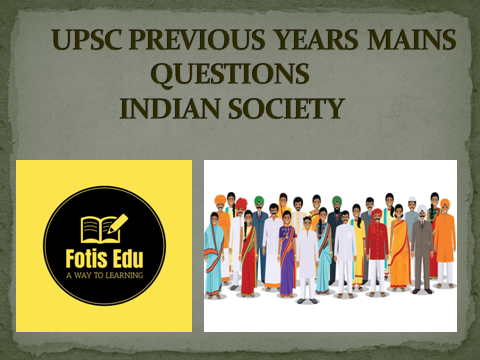
QUES . Why is caste identity in India both fluid and static? UPSC 2023 GS MAINS PAPER I, 250 words, 15 Marks
भारत में जातीय अस्मिता गतिशील और स्थिर दोनों ही क्यों है?
HINTS:

The caste system has existed in some form in India for at least 3,000 years. It is a social hierarchy passed down through families, and it can dictate the professions a person can work in as well as aspects of their social lives, including whom they can marry. The caste identity in India is both fluid and static in nature.
Must read: Impact of post-liberal economy on ethnic identity and communalism
Static character of caste identity
֍ Caste-based discrimination is still prevalent in Indian society. Any attempt to improve social status by lower caste groups is often met with resistance, sometimes violently. As per the NCRB report, atrocities/crimes against Scheduled Castes have increased by 1.2% in 2021 over 2020.
֍ While state action has targeted untouchability, the other markers of caste consciousness such as caste identity, caste based ostracization, varna division, etc. continue to exist. Discrimination and prejudice against certain castes persist, even in urban areas.

֍ In absence of alternative collective identity, caste has emerged as an instrument for demanding political and legal rights. Caste-based political parties and identity politics continue to shape Indian politics.
֍ Inter-caste marriages constitute only a fraction of total Indian marriages even today. As data from the India Human Development Survey (IHDS) shows, just over 5% of urban Indian marriages are outside of caste. Any violation is sometimes met with honour crimes including honour killings. The findings of Social Attitude Research in India suggested nearly 70% are still against inter caste marriages.
֍ Caste based pressure groups demanding for reservations in educational institutions and employment.
֍ In many areas, occupations are still primarily based on caste. According to the Ministry of Social Justice and Empowerment around 97% of people involved in manual scavenging who were surveyed, belonged to the scheduled castes.
Fluid character of caste identity
֍ Now Indian society is more tolerant of inter-caste marriage. The number of inter-caste marriages is increasing day by day, particularly among the urbanised and educated group of each caste.
֍ The lower-caste groups are adopting the rituals, customs, and lifestyles of upper-caste groups in order to improve their social status.
֍ Fluid character of caste identity is evident in inter-caste relations such as accepting cooked food, drinking water, coming into close contact etc. Restaurants, shopping malls, regional celebrations, local festivals, public institutions, private establishments, do not consider the caste factor.
֍ Over the years many lower-class people have converted to Buddhism and Christianity in order to circumvent the restrictions posed by the prevalent caste system.
֍ Education and urbanisation have led to social mobility and a change in caste identity thus loosening of traditional caste ties. People are no more identified according to their caste identity or ascriptive status; rather they are identified according to achieved status.
֍ Government policies such as reservations in education and government jobs have helped to improve the lives of lower-caste people and have made it easier for them to move up the social ladder.
֍ There is a growing dissociation between caste and hereditary occupation. No longer one can deduce a person’s caste by looking at his occupation. A person who is working in a salon may not be a barber.
Caste has for long been viewed as a distinctive feature of the Indian society. ‘Caste’ has often been seen to represent the core of India. However, due to various factors such as modern education, industrialisation, urbanisation, Indian Constitution etc., Indian multi-cultural society has started giving less consideration to the ‘caste’. Thus, caste identity in India is both fluid and static.
External link: https://www.thehindu.com/opinion/a-casteless-society-an-aspiration-or-a-myth-to-cover-up-privilege/article66700373.ece
